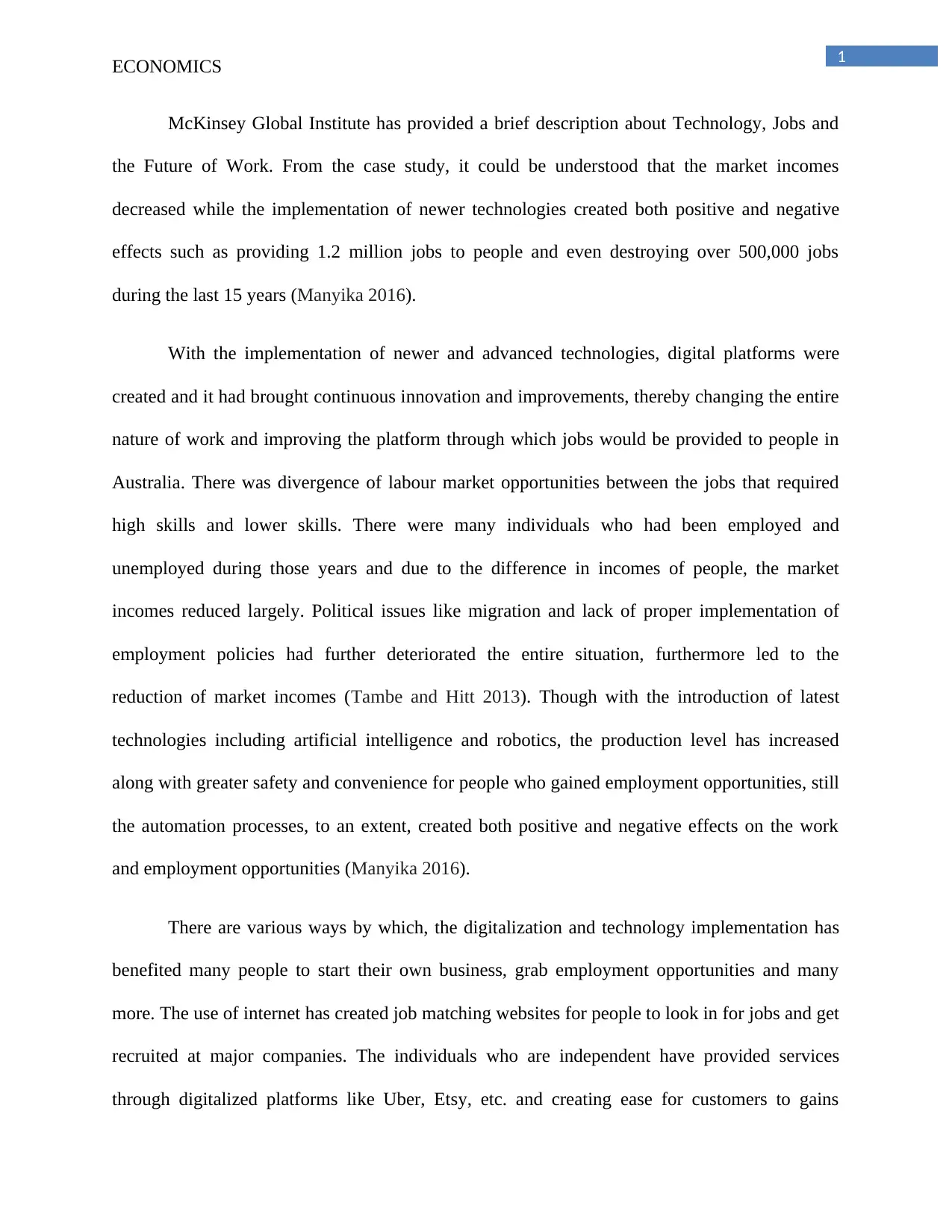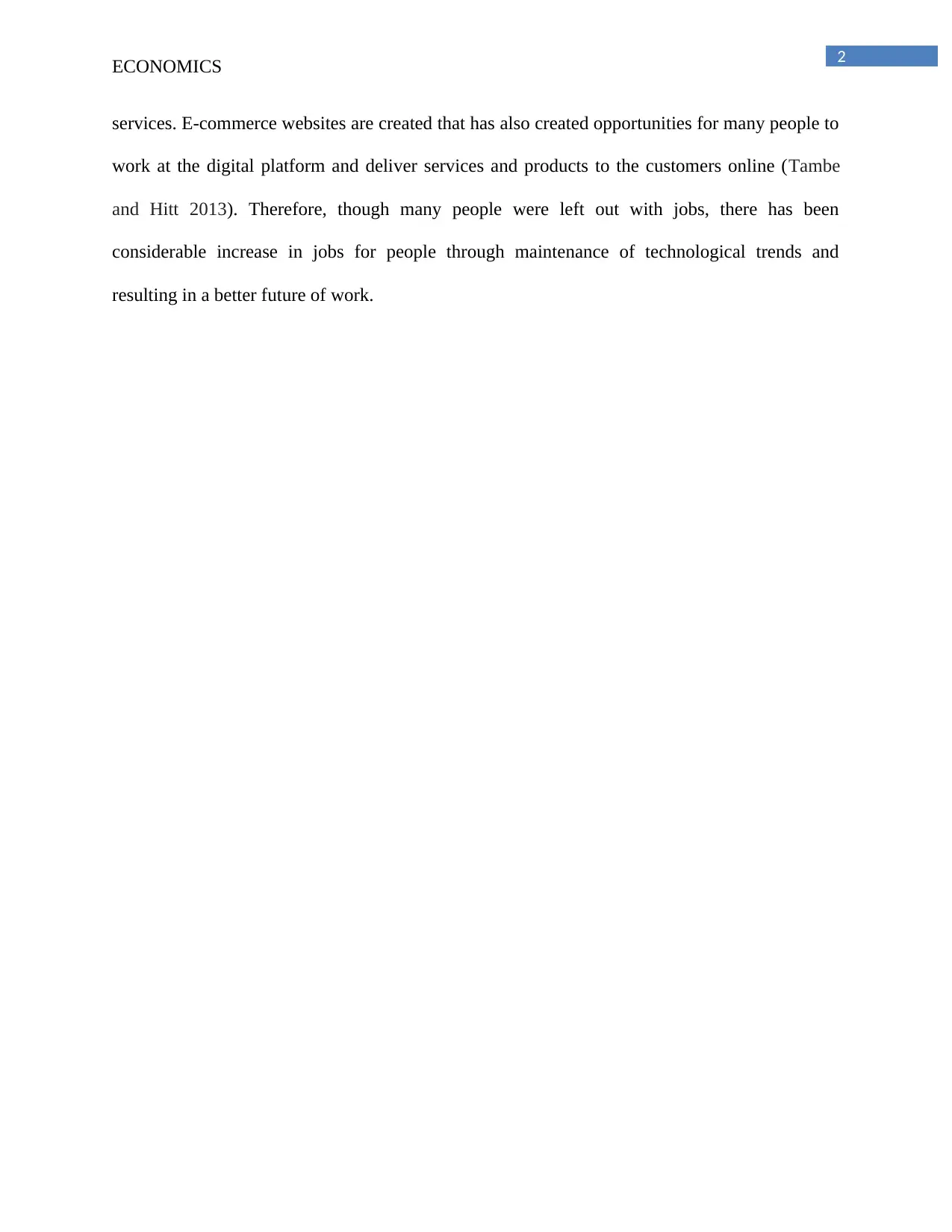Economics Report: Impact of Technology, Jobs, and Future of Work (MGI)
VerifiedAdded on 2020/04/21
|4
|460
|201
Report
AI Summary
This report examines the effects of technology on jobs and the future of work, focusing on the analysis of market incomes and employment trends. The report discusses the impact of digitalization, automation, and the creation of digital platforms, which have altered the nature of work and employment opportunities. It highlights the influence of technological advancements on the labor market, including the creation of new jobs and the displacement of others, along with the role of online platforms in facilitating job matching and providing services. Furthermore, the report considers the effects of political issues and migration on market incomes. The report concludes by emphasizing the importance of technological trends in shaping the future of work and the benefits derived from the implementation of technological advancements.
1 out of 4










![[object Object]](/_next/static/media/star-bottom.7253800d.svg)